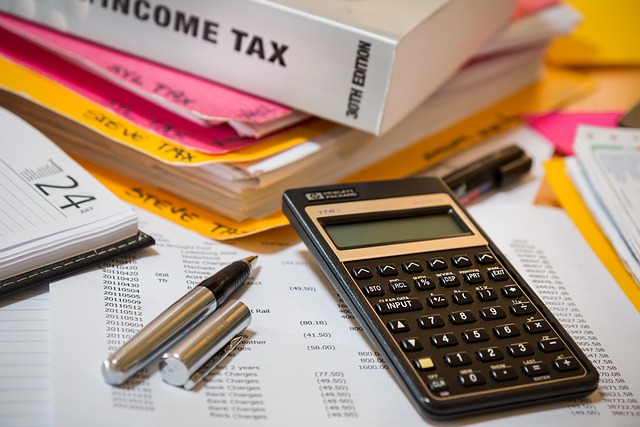
What is the ATO?
When moving to Australia, it is important to know that the equivalent of IRD in Australis is the Australian Taxation Office (ATO). It is the principal revenue collection agency of the Australian Government, responsible for administering various taxation laws and systems in Australia. Its primary function is to ensure that individuals and businesses comply with their tax obligations, including income tax, goods and services tax (GST), excise duty, and other levies.
The ATO also provides guidance and assistance to taxpayers, manages tax-related benefits and refunds, and enforces tax laws through audits and investigations. Additionally, it plays a vital role in implementing government policies related to economic and social development through the taxation system.
What is a TFN?
In Australia, a Tax File Number (TFN) is a unique identifier issued by the Australian Taxation Office (ATO) to individuals and entities for taxation and other related purposes. It is a crucial component of the tax system, used to track an individual’s or entity’s tax obligations, entitlements, and superannuation contributions.
Similarly, in New Zealand, an Inland Revenue Number (IRD number) serves the same purpose. It’s a unique identifier issued by the Inland Revenue Department (IRD) to individuals and entities for tax-related matters.
A TFN in Australia is essential for conducting various financial transactions, such as employment, lodging tax returns, and accessing government services. It helps ensure accurate tax reporting and compliance with tax laws in Australia.
How to Apply for a TFN
As a New Zealand citizen residing in Australia, applying for a Tax File Number (TFN) is a straightforward process, and it’s important to note that it’s free of charge. Here’s how you can apply directly through the Australian Taxation Office (ATO) online:
- The easiest way to apply is via your MyGov Account. If you don’t have an account, you can follow the steps below;
- Navigate to the ATO website and TFN application form;
- Before you start, you will need your passport;
- Fill in all the required fields and submit the form;
- Wait for your TFN to arrive, this can take up to 28 days from the application date.
Remember, it’s crucial to apply for your TFN directly through the ATO’s official channels to avoid any potential scams or fraudulent activities. Avoid third-party services that may charge a fee for TFN applications, as the process is entirely free when done through the ATO. If you have any doubts or concerns about the application process, you can always contact the ATO directly for assistance.
What is the Tax Free Threshold?
In Australia, the tax-free threshold refers to the amount of income you can earn each financial year without paying any income tax on it. The current tax-free threshold is set at $18,200 for Australian residents for tax purposes.
If your total taxable income for the financial year is equal to or less than $18,200, you won’t have to pay any income tax. However, if your income exceeds this threshold, you’ll start paying tax on the portion of your income that exceeds $18,200. The tax rates then progressively increase as your income rises.
If you have entered Australia and started working for only part of the financial year (July 1 – June 30), then your tax free threshold will be adjusted for the amount of months you have resided in Australia for the financial year. See example.
Australian Tax Rates
Just like New Zealand, Australia has different tax rates per income bracket.
- Nil – $18,200 = Nil
- $18,201 – $45,000 = 19c for each $1 over $18,200
- $45,001 – $120,000 = $5,092 plus 32.5c for each $1 over $45,000
- $120,001 – $180,000 = $29,467 plus 37c for each $1 over $120,000
- $180,001 and over = $51,667 plus 45c for each $1 over $180,000
The above rates do not include the Medicare Levy of 2%.
Tax Returns
In Australia, there are several ways individuals can lodge their tax returns, catering to different preferences and circumstances. Here are the main methods:
- Online via myTax: The Australian Taxation Office (ATO) offers an online service called myTax, which allows individuals to lodge their tax returns electronically through the ATO website. To use myTax, you’ll need to create or log in to your myGov account, which is a secure online portal that provides access to various government services. Once logged in, you can access myTax and complete your tax return step by step using the online form. MyTax is suitable for most individuals with straightforward tax affairs.
- Through a Tax Agent: Many individuals choose to engage a registered tax agent to prepare and lodge their tax returns on their behalf. Tax agents are professionals who specialise in tax matters and can provide personalised advice and assistance with tax planning, deductions, and compliance. They can also represent you in dealings with the ATO if necessary. While tax agents typically charge a fee for their services, this cost may be tax-deductible, and the expertise they provide can often result in maximizing your tax refund or minimizing any tax liabilities.
- Using Commercial Software: There are various commercial tax preparation software packages available in Australia, such as TurboTax and H&R Block’s Tax Software. These programs offer a user-friendly interface and guidance to help individuals complete their tax returns accurately. Similar to myTax, you can usually access these software packages online, complete your tax return electronically, and submit it directly to the ATO. Some software packages may also offer additional features like tax planning tools and access to tax professionals for assistance.
- Paper Lodgement: While less common in modern times, individuals can still lodge their tax returns by completing a paper tax return form and mailing it to the ATO. Paper tax return forms can be obtained from post offices, the ATO website, or by contacting the ATO directly. However, this method is less efficient compared to electronic lodgement options and may take longer for processing.
Regardless of the method you choose, it’s essential to ensure that your tax return is lodged accurately and on time to avoid penalties or interest charges from the ATO. Additionally, keeping records of your income, expenses, and relevant receipts throughout the financial year can help streamline the tax return process and ensure that you claim all eligible deductions and offsets.
This page was updated on 4th June 2024
Moving to Australia
- Banking Options
- Childcare & Early Learning
- Community Services
- Credit Checks
- Driver Licence
- Financial Support
- Getting Connected
- Giving Birth
- Healthcare in Australia
- Insurance
- Legal System
- Marriage Relationships
- Pension Eligibility
- Police Check
- Renting Advice
- Responsible Service of Alcohol
- School Years
- Tax in Australia
- What to Bring
- Working With Children Check





